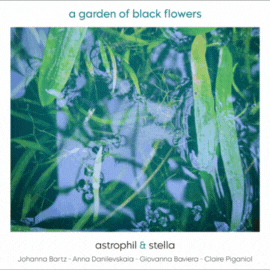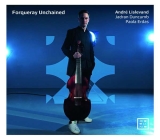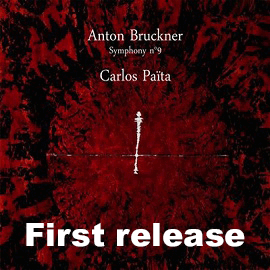 Forqueray unchained; Suite mosaïque en sol (Forqueray, Marais); Suite mosaïque en ut (Couperin, Marais, Forqueray); Suite mosaïque en ré (Visée, Forqueray, Anonymus); André Lislevand, Viola da gamba, Jadran Duncumb, Theorbe & Laute, Paola Erdas, Cembalo, Rolf Lislevand, Gitarre & Mandoline; 1 CD Arcana A486; Aufnahmen 2018/2019, Veröffentlichung 09/04/2021 (61'49) – Rezension von Remy Franck
Forqueray unchained; Suite mosaïque en sol (Forqueray, Marais); Suite mosaïque en ut (Couperin, Marais, Forqueray); Suite mosaïque en ré (Visée, Forqueray, Anonymus); André Lislevand, Viola da gamba, Jadran Duncumb, Theorbe & Laute, Paola Erdas, Cembalo, Rolf Lislevand, Gitarre & Mandoline; 1 CD Arcana A486; Aufnahmen 2018/2019, Veröffentlichung 09/04/2021 (61'49) – Rezension von Remy Franck
Für diese CD haben die Interpreten André Lislevand, Viola da Gamba – er ist der Sohn des Gambisten Rolf Lislevand, der auch mitspielt, und zwar auf der Gitarre und der Mandoline – Paola Erdas, Cembalo, und Jadran Duncumb, Theorbe und Barocklaute, ein außergewöhnliches Programm mit Werken von Marin Marais, Antoine Forqueray, Louis Couperin und Robert de Visée zusammengestellt, das uns in die intime Welt der Kammermusik des 17. und 18. Jahrhunderts führt, in der die Gambe und die Laute dominierten.
In drei thematisch und harmonisch an den Tonarten G, C und D entlang organisierten Suiten werden passende Stücke der genannten Komponisten dargeboten. Gemeinsam ist allen Stücken ihre Originalität sowie ihr Maß an Gefühlsausdruck, durch den die Interpreten sicherlich inspiriert wurden. Lislevand spielt seine Viola da Gamba mit einer Vielseitigkeit, die wohl alle Möglichkeiten des Instruments auskostet. Duncumb und Erdas machen mit nicht weniger phantasievollem Spiel mit, und das Resultat ist reinstes Hörvergnügen, das über eine Stunde hinweg das Interesse des Zuhörers wachhält.
For this CD, the performers André Lislevand, viola da gamba – he is the son of the gambist Rolf Lislevand, who also plays along, on guitar and mandolin – Paola Erdas, harpsichord, and Jadran Duncumb, theorbo and baroque lute, have put together an extraordinary program of works by Marin Marais, Antoine Forqueray, Louis Couperin and Robert de Visée, which takes us into the intimate world of 17th and 18th century chamber music, in which the viola da gamba and the lute dominated.
In three suites organized thematically and harmonically along the keys of G, C and D, appropriate pieces by the aforementioned composers are presented. Common to all the pieces is their originality as well as their degree of emotional expression, by which the performers were certainly inspired. Lislevand plays his viola da gamba with a versatility that arguably explores all the instrument’s possibilities. Duncumb and Erdas join in with no less imaginative playing, and the result is pure listening pleasure for over an hour.

























